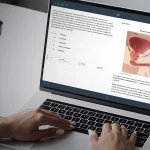Your emergency medicine rotation will be fast, unpredictable, and unlike anything you’ve done before. This rotation is known for its pace and unpredictability. However, with the right mindset and preparation, your ER rotation can be one of the most rewarding parts of your clinical year.
To help you prepare for rotations effectively, we spoke with Rebecca DePalma who, as a PA student, shared practical advice from her emergency medicine experience. Since then, she has earned her Doctor of Medical Science (DMSc) and become a contributing author in the medical field. Her quotes and insights throughout this blog provide valuable guidance for succeeding in one of the most fast-paced, formative rotations of clinicals.
Tips to Prepare for Your Emergency Medicine Rotation
Before your rotation begins, research the site. Knowing whether it’s an urban hospital, rural facility, level 1 trauma center, or community ER will help you anticipate the pace, patient volume, and types of cases you might see. You may also have more hands-on opportunities in rural or less populated sites since there tend to be fewer students.
Clinicals will shape your knowledge in ways that are impossible in the classroom. Embrace this time as one that will put you out of your comfort zone to the point where it integrates into what you are comfortable with.”

Once you're on shift, match the pace of the department while maintaining a thorough approach. The ER moves fast, but your job as a student is to learn. Be efficient without cutting corners.
Find out who’s on the team, how to communicate effectively with them, and the basics of your work. Understanding your role will help you integrate more smoothly into the clinical workflow.
Your PA medical library is a great on-the-go reference for disease topics and clinical presentations. ER-specific apps like QuickEM and Rapid Fire EM Student can also help you stay sharp between cases.
If your preceptor offers you the chance to assist or try a procedure, take it. If they don’t offer, asking if you can step in next time is appropriate. Showing initiative is key.
Before your first day, review high-yield presentations like chest pain, shortness of breath, trauma, abdominal pain, and altered mental status so you’re ready to contribute when things move fast.
Prepare to need plenty of energy boosts. Breaks can be unpredictable, so bring something you can eat quickly. Caffeinated drinks can also help you stay alert during longer shifts.
Expectations for Your Emergency Medicine Rotation
The ER has its own unique systems and rhythms. Understanding how everything works before you arrive can help you stay calm, adaptable, and ready to learn.
Triage: Understanding Patient Prioritization
Every patient who enters the ER is triaged based on the urgency of their condition. You’ll often see a triage score in the Electronic Medical Record (EMR). These levels help determine how quickly a patient should be evaluated:
- Level 1 – Resuscitation: Seen immediately (e.g., airway compromise, unresponsive)
- Level 2 – Emergent: Seen within 15 minutes (e.g., responds only to voice or pain)
- Level 3 – Urgent: Seen within 30 minutes (e.g., low O₂ saturation, dehydration)
- Level 4 – Less Urgent: Seen within 60 minutes (e.g., abnormal behavior)
- Level 5 – Non-Urgent: Seen within 120 minutes (e.g., sore throat, cold symptoms)
These categories prioritize care but can vary slightly by location, and the timing often depends on staffing levels and overall ER volume. Understanding triage levels before your rotation starts can help you anticipate patient needs, prioritize learning opportunities, and better follow your preceptor’s clinical decision-making process.1
For notes, write down things you learn … and to keep track of your patients, as most students have to log their patients for their program.”

Assignments: Fast Track vs. Critical Care
Most emergency departments categorize care based on acuity. During your rotation, you may be assigned to both fast-track and higher-acuity areas to ensure a well-rounded experience.
Fast track typically handles lower-acuity patients (triage levels 4 and 5). Here, you may treat minor injuries and illnesses such as sprains, simple fractures, lacerations, or flu-like symptoms. The pace is brisk yet manageable, providing a great environment to practice suturing, abscess drainage, and other core procedures.2
Higher acuity areas care for critically ill patients (triage levels 1–3). These zones expose you to serious conditions such as trauma, sepsis, cardiac events, and respiratory failure. While the environment can be intense, it’s a valuable opportunity to learn stabilization techniques, sharpen diagnostic skills, and observe rapid clinical decision-making.3
Many programs start students in fast track environments to build confidence before moving to more complex cases. Regardless of your assignment, approach every patient encounter with curiosity, focus, and a readiness to learn.
If you are assisting your preceptor with a procedure, they will often offer to let you try it next time. Say yes to every opportunity. If they don’t offer, feel free to ask if you can try the procedure next time.”

Codes: Participating in High-Stakes Emergencies
During your ER rotation, you’ll likely encounter at least one “code” — a critical situation requiring immediate medical intervention. The most recognized is code blue, which usually indicates cardiac or respiratory arrest.
If you’re certified in Basic Life Support (BLS) or Advanced Cardiac Life Support (ACLS), discuss your involvement with your preceptor at the start of your rotation. You may assist with CPR or other resuscitation measures under supervision. Other types of codes, such as pediatric emergencies or trauma activations, may also arise depending on your site.
Feeling nervous during your code response is natural, but these experiences are some of the most formative in your training. Stay calm, act quickly, and speak up when you’re ready to contribute. Practicing these skills in real-time will prepare you for the rapid decision-making required in emergency care.4
Ask your preceptor if they are okay with you going over to a code … and assisting with CPR. Once the time comes, take the initiative. Speak up and volunteer. It may seem scary at first, but it’s a good experience to garner in your ER rotation.”

Schedules: Adapting to Shift-Based Medicine
Emergency medicine operates around the clock, and your schedule during this rotation will reflect that. Expect shifts ranging from 8 to 12 hours, often including early mornings, nights, weekends, and holidays. Some programs set a minimum weekly hour requirement, while others leave scheduling to your preceptor.
These hours can be physically demanding, especially if you’re new to night shifts. Prioritize sleep, nutrition, and downtime. Despite the unpredictability, the diverse cases each shift offers make it all worthwhile.
The ER is a unique environment with a distinct schedule and lifestyle. Just immerse yourself in the learning experience and make the most of it.”

Ultimately, emergency medicine is fast-paced, unpredictable, and deeply rewarding. Whether you're practicing procedures in fast track or assisting during a code, every moment is a chance to grow. Stay flexible, stay curious, and trust that this rotation will better prepare you for the future.
References
- Bell Law Firm. (n.d.). Medical triage errors. https://www.belllawfirm.com/triage/
- Reliant Emergency Room. (n.d.). ICU vs emergency room: What’s the difference? https://reliantemergencyroom.com/icu-vs-emergency-room/
- MD Ally. (n.d.). What are high and low acuity patients? https://mdally.com/insight/high-and-low-acuity-patients/
- American College of Emergency Physicians. (n.d.). ED facility-level coding guidelines. https://www.acep.org/administration/reimbursement/ed-facility-level-coding-guidelines






